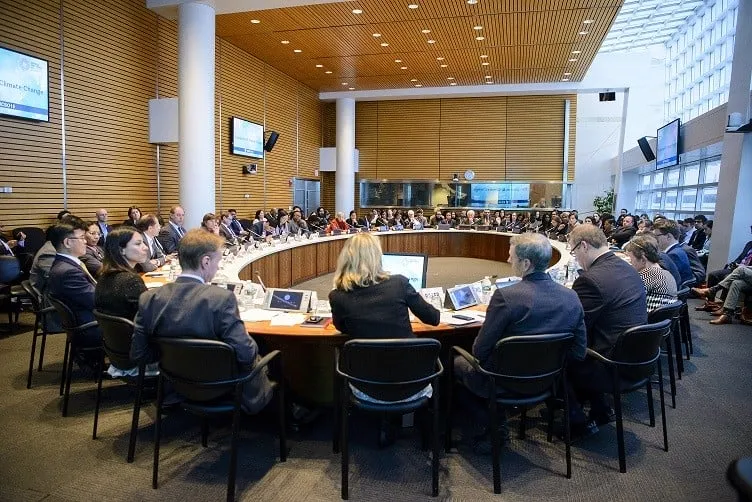
In recent years, world banks have come across growing threats in the field of cybersecurity. This phenomenon is becoming more and more relevant in 2025, when the number of cyber attacks for financial institutions increased significantly. These studies S&P Global show that 53% of banks consider cyber attacks the main operating threat to their organizations. These threats have serious consequences for data security, financial transactions and reputation of banks. In response to this, banks are actively investing in strengthening digital security and develop new strategies to protect against cyberosis.
1. An increase in the number of cyber attacks
Every year the number of cyber attacks for financial institutions continues to grow. Banks, being one of the most vulnerable segments for cyberism, are the goal for hackers seeking to access the financial data of customers or to violate the work of financial systems themselves. These attacks can be diverse: from phishing and ddos attacks to more complex threats, such as attacks on blockchain technology or data encryption.
World banks also face threats associated with internal risks - such as insufficient data protection or unscrupulous actions of employees. The problem is aggravated by the fact that many financial institutions are still not able to adapt their security systems to modern threats in real time.
2. Investments in cyber protection
To combat increasing risks, banks began to actively invest in cybersecurity. This includes both the modernization of existing protection systems and the introduction of new technologies, such as artificial intelligence (AI) and machine learning (ML), which can quickly identify anomalies in the data and respond to threats quickly. Some banks also began to cooperate with external security suppliers in order to gain access to the latest solutions in the field of cyber protection.
Banks are focused on the following security aspects:
- Data encryption: An increase in data encryption levels becomes an important part of the strategy of protection against cyberosis. This provides an additional security layer for information transmitted via the Internet.
- Analytics and artificial intelligence: The use of AI to detect suspicious operations and patterns of behavior, which allows you to quickly prevent possible threats.
- Multifactorial authentication: Introduction of more stringent methods of customer identification to prevent data falsification.
- Risk management: Development of flexible and effective risk management strategies that can adapt to changes in threats and technological environment.
3. Risk management strategies
One of the key aspects of the fight against cyberosis is risk management. In the context of digitalization and constant growth of threats, banks are forced to revise their operating models and risk management approaches. Modern threats require the integration of cyber protection systems into the everyday processes of the bank. It requires:

- Assessments of current risks: A constant and thorough assessment of vulnerable points in the infrastructure and banking systems.
- Training employees: An important element of protection is staff training. Employee awareness programs about cyberosis can significantly reduce the risks of data leaks.
- Incident planning: Development of detailed response plans to cyber attacks, which will help to quickly minimize the consequences and return the bank's work.
4. Consolidation in the banking industry
Given the many challenges faced by banks, including cyberism, as well as with the problems of compressed margin revenues, in the banking sector there is a tendency towards consolidation. The mergers and acquisitions of large financial institutions are becoming more and more common. This consolidation is aimed at creating larger and stable organizations that can effectively cope with cyberosis, manage risks and optimize operating costs.
The advantages of such associations include:
- Reducing operating costs: Association allows you to reduce the costs of safety and risk management, as larger banks can afford more powerful protection systems.
- Diversification of risks: The combination of assets and resources allows you to diversify the risks associated with cyber attacks, especially in the case of small and medium -sized banks.
- Increased competitiveness: Big banks have the opportunity to quickly adapt to changing market conditions and develop more complex and effective safety solutions.
5. Global trends and prospects
Against the backdrop of these changes, banks around the world continue to adapt their security strategies to growing digital threats. It is important to note that cyberism is becoming a global problem that is not limited only to large financial institutions. Even small and medium -sized banks should invest in defense of data and improve their security systems in order to remain competitive in the world where information becomes the most valuable asset.
Given the increase in cyber attacks to financial infrastructure, digital security in the banking industry should become not just part of the operating strategy, but its basis. In conditions of growing threats, banks should be prepared to constantly improve their approaches and introduce new technologies to protect their customers and assets.
Thus, cyber protection becomes one of the main priorities for world banks, and the trend for strengthening security will continue to develop in the coming years.










James Henderson
Voltraeelat consistently delivers well-researched articles that keep me ahead in understanding global banking threats.
Elizabeth Morgan
I find the insights on business banking risks very informative and practical for my work.
Michael Carter
I appreciate the detailed coverage on cybersecurity measures adopted by major banks worldwide.